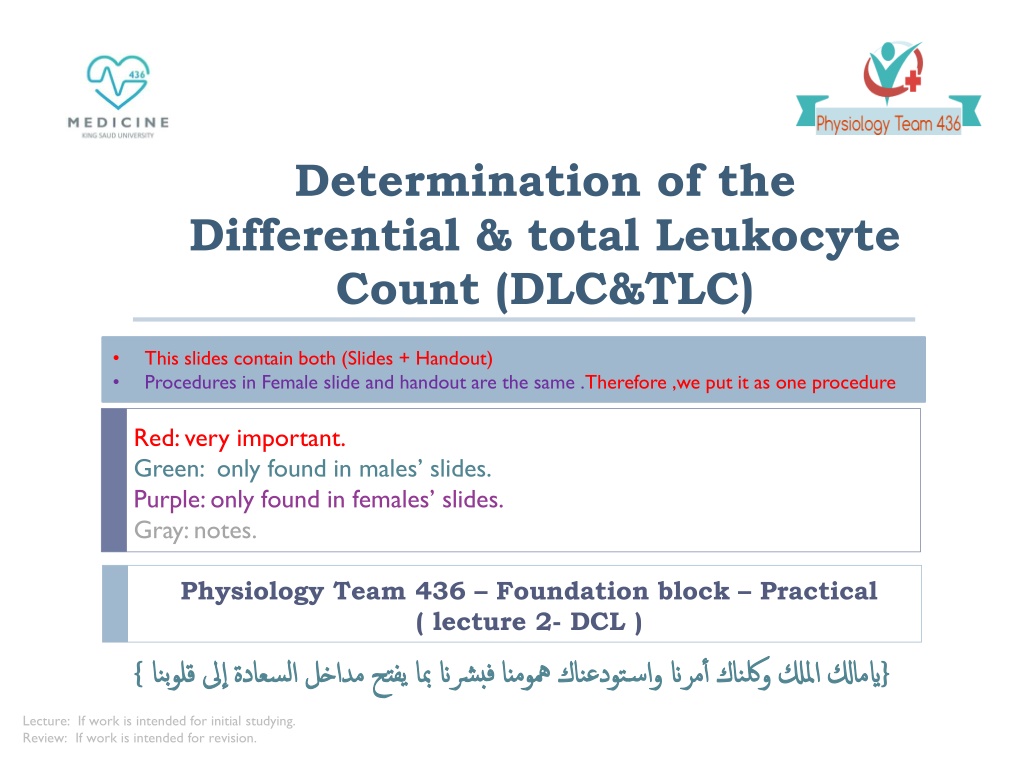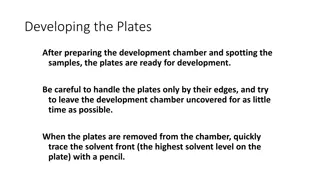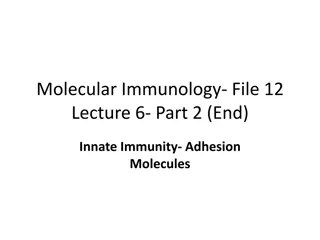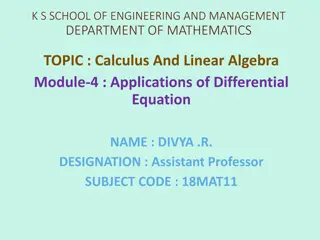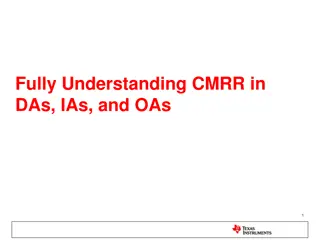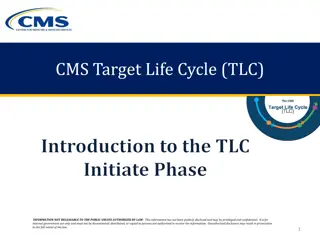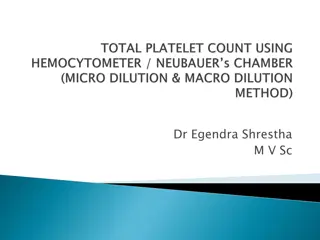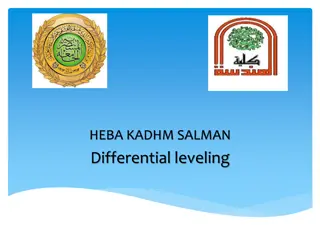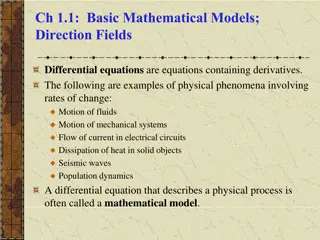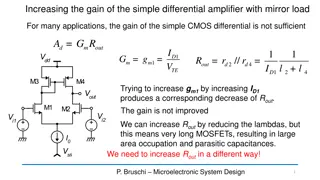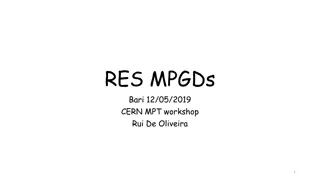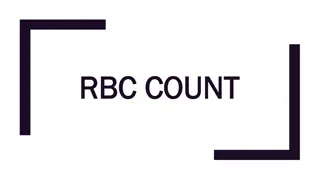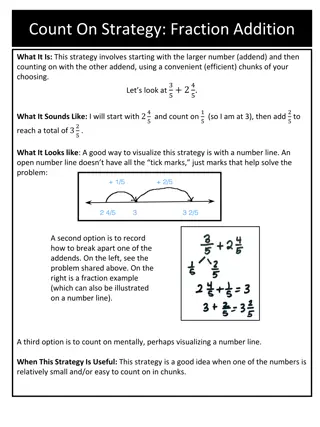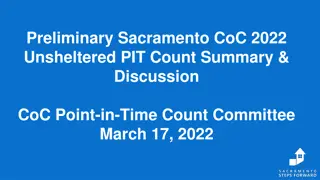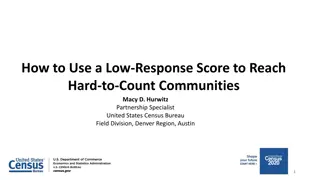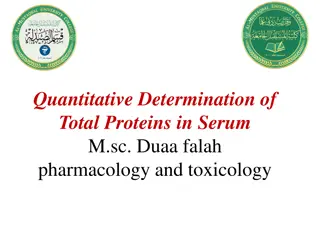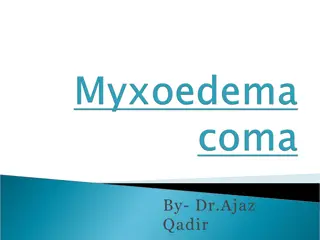Understanding Differential and Total Leukocyte Count (DLC & TLC)
Differential and Total Leukocyte Count (DLC & TLC) is a crucial test that determines the percentage of different types of white blood cells in the total leukocyte population, aiding in diagnosing various disease processes. The test involves identifying and counting different types of white blood cells under the microscope to understand their functions and morphology. Neutrophils, lymphocytes, monocytes, eosinophils, and basophils play unique roles in fighting infections, with varying percentages in the blood. This procedure is essential for healthcare professionals to assess immune responses and detect abnormalities in the white blood cell population.
Download Presentation

Please find below an Image/Link to download the presentation.
The content on the website is provided AS IS for your information and personal use only. It may not be sold, licensed, or shared on other websites without obtaining consent from the author. Download presentation by click this link. If you encounter any issues during the download, it is possible that the publisher has removed the file from their server.
E N D
Presentation Transcript
Determination of the Differential & total Leukocyte Count (DLC&TLC) This slides contain both (Slides + Handout) Procedures in Female slide and handout are the same .Therefore ,we put it as one procedure Red: very important. Green: only found in males slides. Purple: only found in females slides. Gray: notes. Physiology Team 436 Foundation block Practical ( lecture 2- DCL ) { { } } Lecture: If work is intended for initial studying. Review: If work is intended for revision.
Objectives Identify the different types of white blood cells under the microscope. Describe the normal values expected for the differential leucocyte count. To practice the procedure for differential leucocyte counting Understand the use of the differential leucocyte count in the diagnosis of disease processes.
Introduction What is Differential Leukocyte Count (DLC) ? DLC is a routine test in hospitals which determine the percentage of each type of white blood cells in the total leucocyte population. Each type of WBCs performs a different function against infections and each type of infection yields a different white cell picture in the blood. Each type of WBCs has unique morphology and staining characteristics, which is responsible to specify the type of the cells.
Never Let Monkey Eat Banana Neutrophil , Lymphocyte , Monocyte , Eosinophil , Basophil Most common less common Types of WBC . Agranular = A means not 1. Granular 2. A Granular (polymorphnuclear PMN ) Eosinophil Neutrophil Basophil Monocytes Lymphocyte Less common in the blood stream (1-6%). Some sources say (1 3 %) Most commonly seen white blood cells in the circulating blood (40/50 -70)% The rarest of all white blood cells found in the blood (0-1%). Or (0.4 1%) About 4-6% or 5- 10% of the blood cells About 25-35% of the blood cells -Granular: is categorized by: COLOR -A granular: is categorized by SIZE.
Numbers may vary from one source to another Neutrophils(10-16um ) Some sources say 10-14 um Clinical application : It will increase in acute bacterial or fungal infections. (pyogenic illness) Nucleus Cytoplasm: Cytoplasmic granules blue-violet Complex multi-lobed nucleus (from 2 to 6 lobes) connected by chromatin threads. Seen clearly through cytoplasm. slate-blue in color Small Fine, closley-packed violet(purple)-pink. Not seen seperately Give ground-glass appearance Do not cover nucleus They have small cytoplasmic granules take a neutral (purple or pink) color with various stains such as Wright s stain. Any thing with this color is from male slide (from the schedule that we put it as summary in slide no 13-14)
Numbers are vary from source to other Eosinophils (10-15um) Clinical Application : It will increases in parasitic infections and allergies. Nucleus Cytoplasm Cytoplasmic granules 1. 2. Blue-violet . 2-3 lobes. often is a dumbbell-shaped nucleus (bi-lobed). Lobes connected by thick or thin chromatin band. Seen clearly through cytoplasm. Eosinophilic Light pink/red Granular Large , prominent , coarse , red to orange (eosinophilic) granules uniform size Seen seperatley Do not cover the nucleus 3. Any thing with this color is from male slide (from the schedule that we put it as summary in slide no 13-14)
Numbers are vary from source to other Basophils (10-15um) Clinical application : It will increase in allergies and malignancies. granules contain Heparin (an anticoagulant). and Histamine, which increases the permeability of capillary walls. Nucleus Cytoplasm Cytoplasmic granules Blue-violet. Not clearly Seen through cytoplasm because it is covered by large granules. (somewhat hidden) Irregularly shaped; may be S shaped rarely (bi-lobed). Basophilic Bluish Granular Basophilic Large, very coarse Variable size Deep purple Seen seperatley Completely fill the cell, cover the nucleus Any thing with this color is from male slide (from the schedule that we put it as summary in slide no 13-14)
Numbers are vary from source to other Monocytes It is the largest of all white blood cells in size (12-20um). Clinical application : it will increase in chronic infections. Nucleus Cytoplasm: Cytoplasmic granules Pale blue-violet, Large single May be indented horseshoe- shaped, or kidney-shaped ( can appear oval or round if seen from the side) slate-blue in color. Abundant frosty Amount may be larger than that of nucleus do not contain any granules. Any thing with this color is from male slide (from the schedule that we put it as summary in slide no 13-14)
Numbers are vary from source to other Lymphocytes General characteristics: Deep blue-violet Small, spherical cells with large, round nucleus in each of them. The Nucleus occupies most of the volume of the cell, leaving only a thin crescent rim of Cytoplasm around it. The cytoplasm of these cells does not contain any granules. It will increase in acute viral infections (infectious mononucleosis) and malignancies . Small Lymphocytes Large Lymphocytes Small and Large Lymphocytes are explained in next slide Any thing with this color is from male slide (from the schedule that we put it as summary in slide no 13-14)
Large and small Lymphocytes (male slide) Large lymphocyte small lymphocyte Deep blue-violet Single, large, round or oval, almost fills cell. May be central or eccenric Deep blue-violet Single, large, round, almost fills cell. Condensed lumpy chromatin, gives ink spot appearance. Nucleus Large crescent of clear, light blue cytoplasm Amount larger than in small lymphocyte Hardly visible Thin crescent of clear, light blue cytoplasm Cytoplasm Cytoplasmic granules No visible granules (5-10%) , (10-15 um) (20-40%) (7-9 um) Exist and Size Large Small
DLC Equipment & Procedures : DIFFERENTIAL LEUCOCYTE COUNT Equipment Various dyes for staining blood films : Wright s Stain & Leishman s stain Light Mineral or Cedar wood Oil Microscope with an Oil Immersion Object Microscope Slides Procedures Using various dyes + microscope slide 1.Prepare a stained blood film with the help of Wright s stain Using microscope with an oil immersion objectives + Mineral or Cedar wood oil 2.Set the stained blood film under the oil immersion objective lens in a light microscope 3.Identify various types of white blood cells according to their histological characteristics , count about 100 cells The diagram above from 435
Summary % of leukocyte
Examine yourself ! What are these cells ? 3 5 1 2 4 What stains are used in the preparation of blood films? 1. Leishman s stain 2. Wright s stain 1. 2. 3. 4. 5. Basophils Eosinophils Neutrophils Monocyte lymphocytes Video describe WBCs : https://www.youtube.com/watch?v=Tdx-U8S6ZMk
Examine yourself ! 1. What are the normal values of each different type of white blood cells? 50 70 % 1 3 % 0.4 1 % 4 6 % 25 35 % NEUTROPHILS EOSINOPHILS BASOPHILS MONOCYTES LYMPHOCYTE 2. Under what conditions are the percentages of the various types of white blood cells increased? NEUTROPHILS will increase in acute bacterial or fungal infections. EOSINOPHILS will increases in parasitic infections and allergies. BASOPHILS will increase in allergies and malignancies. MONOCYTES will increase in chronic infections. LYMPHOCYTE will increase in acute viral infections and malignancies.
Thank you! The Physiology 436 Team: Ruba Ali Dorrah alhamdi Nasser Abu Dujeen Hassan Al Shammari Team Leaders: Qaiss Almuhaideb Lina alwakeel Contact us: Physiology436@gmail.com @Physiology436
